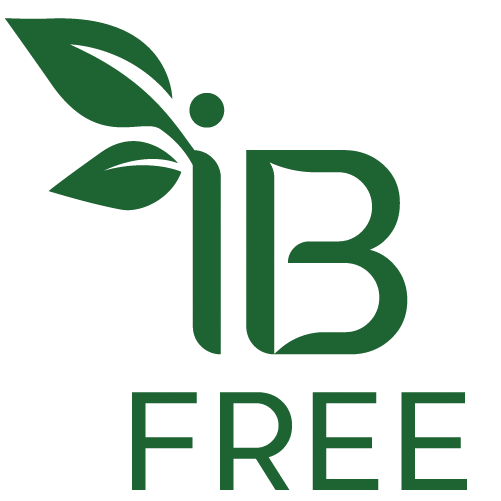Foods and Drinks with the Highest Concentrations of FODMAPs to Avoid for IBS Relief
For people living with Irritable Bowel Syndrome (IBS), food is rarely simple. A healthy salad or a piece of fruit can sometimes feel like a gamble. That’s because certain carbohydrates — known as FODMAPs — ferment in the gut, causing bloating, gas, and pain. Managing these fermentable carbs is one of the most evidence-based ways to reduce IBS symptoms.
Below is a guide to the foods and drinks with the highest FODMAP concentrations, and how to navigate them without losing nutritional balance.
(For a complete breakdown of the science behind FODMAPs, see our Understanding FODMAPs explainer.)
1. High-FODMAP Fruits
Fruits are packed with nutrients, but some varieties are loaded with fermentable sugars like fructose and sorbitol. These short-chain carbs draw water into the intestines and feed gut bacteria, leading to fermentation and bloating.
Avoid or limit:
Apples (fructose, sorbitol)
Pears (fructose, sorbitol)
Cherries (fructose, sorbitol)
Watermelon (fructose, sorbitol)
Mangoes (fructose)
Blackberries, raspberries, plums, apricots (sorbitol)
Skip dried fruit entirely. The dehydration process concentrates sugars, making dried mangoes or prunes especially high-FODMAP (Monash FODMAP).
2. High-FODMAP Vegetables
Vegetables are essential — but not all are gut-friendly. Many contain fructans and polyols that ferment rapidly.
Avoid or limit:
Onions and garlic (fructans)
Cauliflower, asparagus, artichokes (fructans)
Mushrooms (mannitol)
Brussels sprouts, leeks (fructans)
Even small amounts of onion or garlic powder can trigger symptoms for sensitive individuals. Consider using infused oilsinstead (see our Garlic, Onion, Milk, Wheat Bread & Pizza guide).
3. Legumes and Pulses
Beans and lentils are nutritional powerhouses — but for people with IBS, they’re often the perfect storm of FODMAPs, rich in galacto-oligosaccharides (GOS).
Avoid or limit:
Chickpeas, lentils, kidney beans, black beans, soybeans
Canned legumes (thoroughly rinsed) may be somewhat easier to tolerate, as soaking reduces GOS content (NIH – PMC review on legumes and GOS).
4. Dairy and Dairy Alternatives
The main issue here is lactose, a disaccharide that’s difficult to digest without enough lactase enzyme.
Avoid or limit:
Cow’s or goat’s milk
Soft cheeses (ricotta, cream cheese)
Yogurt (unless lactose-free)
Ice cream
Try lactose-free dairy or aged cheeses like cheddar or Swiss — the fermentation process reduces lactose content (Harvard Health Publishing).
5. Grains and Cereals
Fructans are also found in many grains, particularly those that contain gluten.
Avoid or limit:
Wheat (bread, pasta, crackers)
Rye (breads, cereals)
Barley
Swap in rice, oats, quinoa, or cornmeal products, which are naturally low-FODMAP (see our A Diet for IBS Relief for meal ideas).
6. Sweeteners
Even small amounts of sugar alcohols and high-fructose sweeteners can trigger bloating and gas.
Avoid:
High-fructose corn syrup (HFCS)
Honey and agave syrup (fructose)
Sorbitol, xylitol, mannitol (polyols in sugar-free gum and drinks)
Opt for maple syrup or table sugar (sucrose) instead — both are low-FODMAP in moderate portions (Monash University).
7. Nuts and Seeds
While nutritious, some nuts are high in GOS and can cause gas and cramping.
Avoid or limit:
Cashews
Pistachios
Safe swaps: walnuts, pecans, and macadamias (in small portions).
8. Beverages
Liquid calories can sneak in high-FODMAP offenders, from juices to sweetened drinks.
Avoid or limit:
Fruit juices (apple, pear, grape)
Beer (fructans from barley)
Diet sodas (sorbitol, xylitol)
Choose peppermint tea, water, or infused water instead — all soothing and gut-friendly.
Managing IBS: Moderation, Substitution, and Curiosity
Managing IBS isn’t about restriction; it’s about clarity. Everyone’s gut microbiome — and therefore tolerance threshold — is different. That’s why the low-FODMAP diet uses a three-phase structure: elimination, reintroduction, and personalization.
For guidance, see:
As Monash University researchers remind us, “the FODMAP diet is not a forever diet — it’s a tool to learn your limits” (Monash FODMAP).
